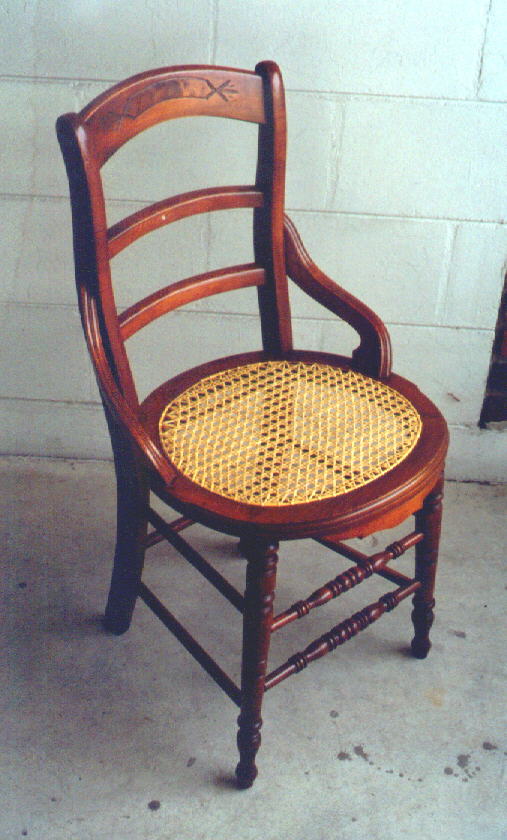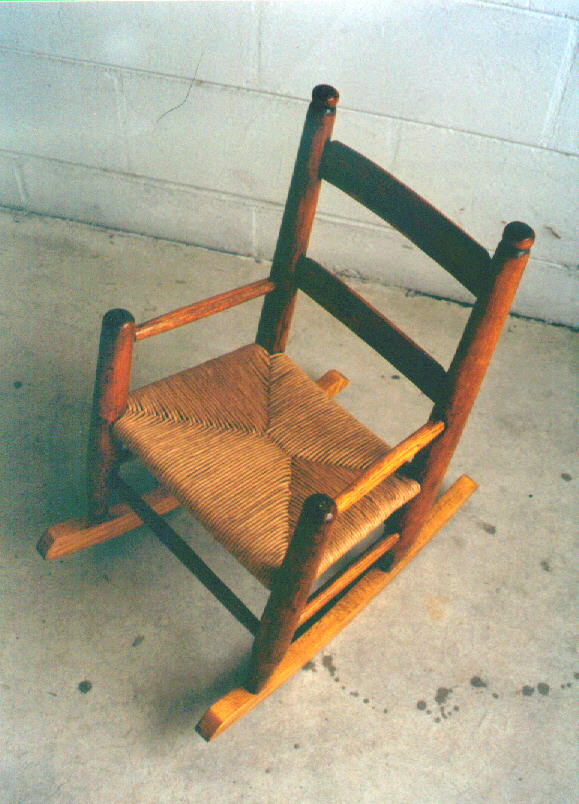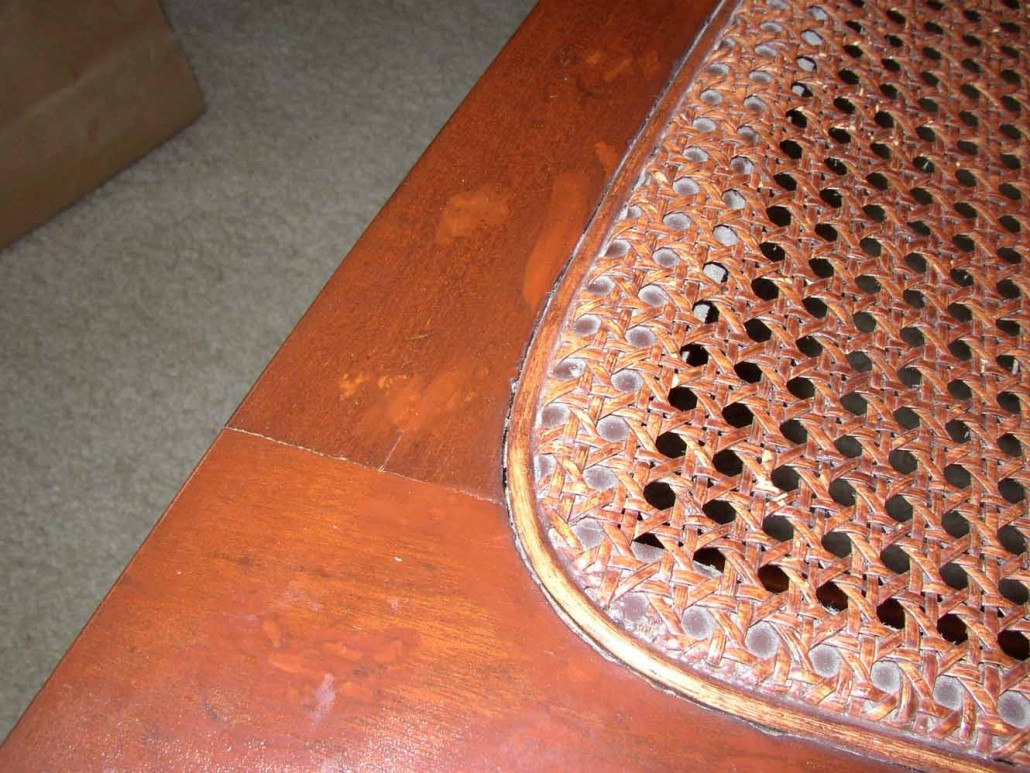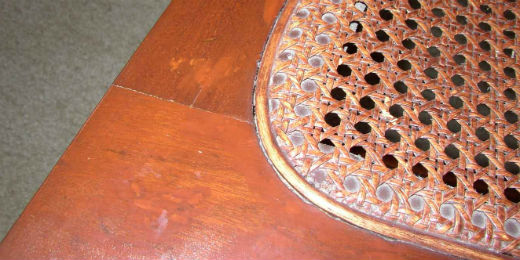
CRYSTAL RIVER, Fla. – What is that you are sitting on? No, not your hands or your backside. I mean the piece of furniture that is supporting you. A stool? A chair? A couch? But beyond that what exactly is in contact with your sitter?
When you get right down to it the choice in seating material for furniture is surprisingly narrow. First of course is the raw material the seat support structure is made with. In most cases that would be wood. Many early chairs, like wainscot chairs, had simple plank seats. Comfort was not a subject that had occurred to European furniture makers yet. Earlier civilizations had solved the problem with sling seats or padded hides but that was somewhere else in another time.
The choices after wooden seats narrow down to a sheet material of some sort like leather, vinyl or oilcloth. Then there are the woven fabric materials that have held sway for the last few centuries, which include both natural and manmade fibers in close weave. Then there is that other stuff.
It’s not fabric, it’s not leather or vinyl. It’s that sort of wooden looking stuff that has some flexibility to it and it looks woven somehow but it’s not fabric.
Right off you can be pretty sure it is not bamboo. Bamboo is what old-fashioned fishing poles are made of and while some furniture is made of bamboo it is not usually found as seating material in furniture made with other material. Even in bamboo furniture the bamboo seating is usually covered with a padding of some sort. Raw bamboo is not very comfortable to sit on.
And it probably is not rattan. Rattan is the stem of a type of tropical palm tree most often found in commercial quantities in Borneo. The stem has its leaves removed and the outer skin scraped off. It can then be bent to shape to make furniture. Larger pieces are steam bent and smaller ones are merely soaked to provide flexibility. Larger pieces of rattan look like bamboo with the hard outer shell removed and rattan furniture closely resembles bamboo furniture. It also usually has wrapped joints but in newer pieces the wrapping is often plastic made to look like leather or fiber while concealing a nailed or screwed joint. Seating in rattan closely follows the pattern of seating in bamboo furniture.
So perhaps it is wicker. In fact some wicker is actually made with the stems of small rattan palms that can be woven into a coarse fabric like sheet and wrapped around a hardwood frame for support. Wicker can also be made of thin lengths of willow. Most wicker material is less than a quarter inch in diameter and some is much smaller. For centuries wicker furniture had been handmade, woven from raw stock and assembled into furniture.
Just after the turn of the 20th century a wicker factory owner named Marshall B. Lloyd was faced with a strike by his workers. Rather than close the factory, Lloyd devised a machine that could weave a paper wicker substitute much faster than the old hand method. The new wicker was essentially brown craft paper wound tightly around a thin metal wire core. Virtually all wicker made after that was machine-made “paper” wicker. Heywood Brothers & Wakefield acquired Lloyd’s company in 1921 and that set the stage for the great wicker boom in the first half of the century. But wicker alone is seldom used as seating material in other than wicker furniture since it doesn’t adapt well to forms other than being woven to wrap around a frame.

What else is left? There is the other twisted material often found in seats called rush. Rush originally was made of twisted wet cattail stems that were dried and wrapped around a seat frame. Producing the twisted cattails is fairly labor intensive and it wasn’t too long before manufacturers figured out a substitute based on Lloyd’s paper wicker. A new factory-made product showed up made in a similar manner to the paper wicker material, but it was thinner and lacked the wire core. This version of twisted craft paper was euphemistically referred to as “fiber” rush as opposed to “natural” rush or “cattail” rush and was used as a substitute for real rush for many years. The paper rush has a good lifespan but it doesn’t handle water as well as natural cattail rush and it often requires a surface coating to prolong its life. In the last few decades however, genuine natural rush has reappeared in the market as furniture retailers import goods made in the Eastern Hemisphere where the art has not been lost. Natural rush is now found primarily in well- preserved early 19th century chairs and in fairly modern chairs imported in the last few years. Almost all other rush seating is fiber rush.
That leaves only one remaining seating material to solve the puzzle. Actually there are a number of individual additional materials but they all fall in the broad category of “cane.”

Cane is the thin outer skin of cane that has been cut into thin flat narrow strips that can be woven like wide flat thread into holes drilled into the perimeter of a chair seat. This type weaving, generally in a pattern that produces octagonal shaped holes in the fabric, is called ‘seven strand” cane or “hole” cane, so called for the required drilling of holes in the seat. After soaking in water or glycerin the individual strands of cane are woven in and out of the holes in the seat and tighten to a firm surface as they dry. This too is a labor-intensive project and fewer younger people are taking up the art.

But a new type of cane seating was introduced after the turn of the 20th century that made replacing cane seats much easier. This was “sheet” cane woven on looms similar to the Lloyd loom concept. The sheet cane does not require drilling holes in the seat. It only requires a groove about one-fourth inch deep and one-fourth inch wide in which to glued the solid border, called spline. The spline is installed on top of the cane sheeting in the groove and pounded in to secure it while the cane and the glue dry. When the whole setup dries it produces as tight a surface as the hand cane and even has the same octagonal patterns. The only clues to telling the difference between the two types of cane is the solid border created by the spline in sheet cane as opposed to the obviously visible weaving of the hand cane into and out of the holes in the seat.

But wait – there are even newer entries in the field. In the second half of the 20th century a type of composition woven cane was introduced to reduce the cost even further. This type of cane had a thin strong nylon cord in the center that added strength to the seat.
Even more recently a new plastic cane has been introduced into the hand-cane market that looks like real cane, works easier than natural cane – so I am told – and has great resistance sunlight and outdoor temperatures. It is a “natural” fit for outside furniture with the look of hand woven cane.
At least now you know what you are sitting on.
___
By FRED TAYLOR
Send comments, questions and pictures to Fred Taylor at P.O. Box 215, Crystal River, FL 34423 or email them to him at info@furnituredetective.com. Visit Fred’s newly redesigned website at www.furnituredetective.com and check out the new downloadable “Common Sense Antiques” columns in .pdf format.
His book “How To Be a Furniture Detective” is available for $18.95 plus $3 shipping. Send check or money order for $21.95 to Fred Taylor, P.O. Box 215, Crystal River, FL, 34423.
Fred and Gail Taylor’s DVD, “Identification of Older & Antique Furniture” ($17 + $3 S&H) is also available at the same address. For more information call 800-387-6377 (9 a.m.-4 p.m. Eastern, M-F only), fax 352-563-2916, or info@furnituredetective.com. All items are also available directly from his website.




